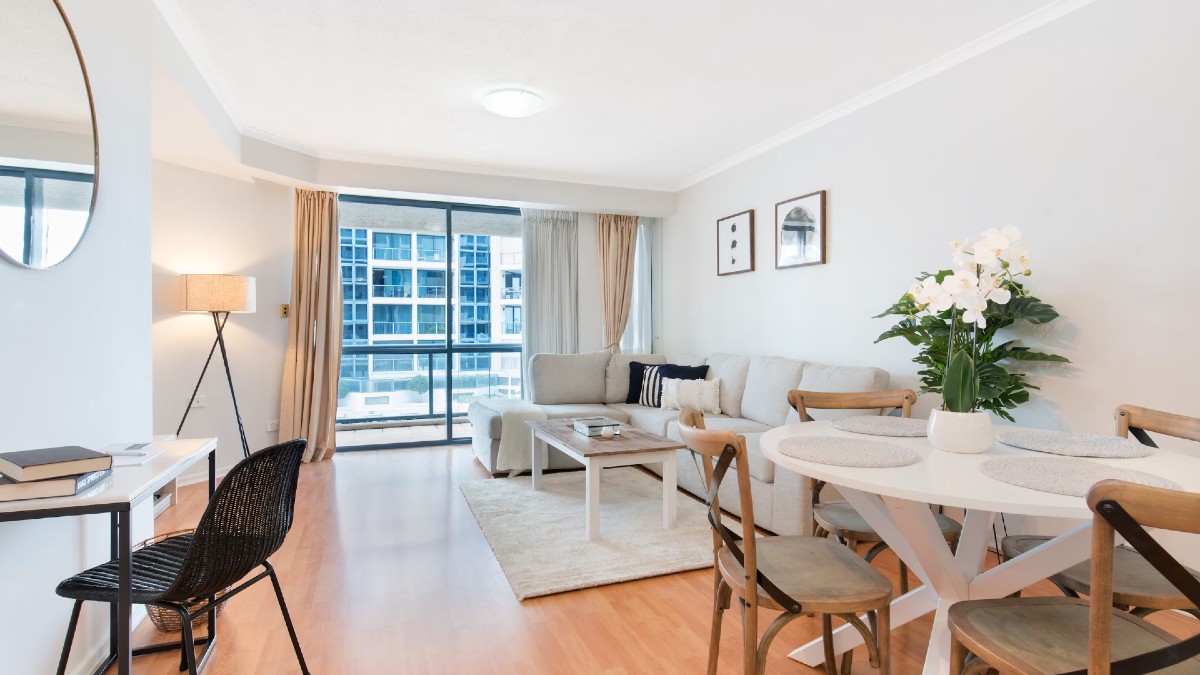By taking out a package home loan with a bank or lender, you can combine a number of your everyday financial needs into a single product. Some of these package loans can offer discounts on these financial products, and could even be cheaper overall, while others can cost you with hidden fees and terms.
Let’s take a look at what package home loans are, and how they can help you.
What is a package home loan?
A package (or packaged) home loan is a home loan that also allows you to combine other banking products with the mortgage, such as:
-
Insurances, such as home and contents insurance, car insurance, landlord insurance etc.
These package loans tend to offer a discounted home loan interest rate compared to the lender’s standard variable rate, and will often charge something called a package fee, which is basically a higher annual fee for the cost of bundling all the products together. This combined package fee can actually be quite cost-effective though, as the individual products themselves could actually have higher fees if separated from the loan.
For example, credit cards often charge an annual fee, as can mortgage offset accounts and bank accounts. When you combine all these fees into one single fee, you can end up ahead financially by banking with just the one provider.
Can package home loans provide insurance discounts?
Yes, package home loans can give insurance customers access to some pretty substantial discounts. Depending on the type of insurance you bundle into the home loan (home and contents insurance, car insurance, landlord insurance etc.), you could get access to discounts as high as 20% on your annual premiums.
A more common number is usually around 10%. Westpac, for example, offers a 10% discount on home and landlord insurance for customers with its Premier Advantage Package. For a $1,500 annual premium, that’s a $150 discount right there.
Do package home loans have higher rates and fees?
The difference between package loans and non-package loans in terms of rates and fees is two-pronged. In terms of the advertised interest rate, package home loans usually come with a discount, making them appear cheaper than non-package products.
According to Reserve Bank home loan data, ‘discounted rates’ - rates offered on standard variable loans that are a part of professional packages - average 3.65% p.a as at October 2020 for an owner-occupied property. Comparatively, the average standard variable loan for owner-occupiers is 4.52% p.a, which is almost 100 basis points higher. There’s a similar difference for investor packages, where package loans have an average interest rate of 4.23% p.a compared to 5.10% p.a for non-package loans.
A 2018 report from the ACCC meanwhile found owner-occupiers with principal and interest repayments at each of the biggest four banks except Westpac were paying average interest rates on package standard products that were 7–40 basis points lower than the next cheapest product at the same bank.
However, this can be deceiving, as package loans will often charge a higher annual fee compared to standard variable loans, called a package fee, which can increase the loan’s comparison rate and make it more expensive overall. These annual package fees are often between $300-$400 per year, easily higher than the ongoing fees charged by many lenders these days. Some are as high as $700.
Of course, this isn't always true. Looking at what the major banks charge for their package products, the package option sometimes has a lower comparison rate too:
|
Variable P&I OO rate |
Variable P&I OO comp rate* |
package variable P&I OO rate |
package variable P&I OO comp rate* |
|
|---|---|---|---|---|
|
ANZ |
3.59% p.a. |
4.00% p.a. |
3.79% p.a. |
4.20% p.a. |
|
CBA |
4.55% p.a |
4.70% p.a |
3.85% p.a |
4.27% p.a |
|
NAB |
3.45% p.a |
3.45% p.a. |
3.67% p.a. |
4.08% p.a |
|
Westpac |
4.58% p.a. |
4.72% p.a. |
3.29% p.a |
3.70% p.a |
Source: Various big banks' websites. Standard variable OO P&I loan compared with standard package loans, 80% LVRs. Cheaper variable home loans exist among these banks. For example, the Commonwealth Bank Extra Home Loan has a 3.13% p.a advertised rate (3.14% p.a comp rate*). Info correct as at …
So sometimes, a package home loan can offer a pretty substantial interest rate discount. However, they can charge hundreds of dollars extra per year in fees on average, while a standard home loan can be more expensive upfront but cheaper over time.
|
CBA |
Westpac |
ANZ |
NAB |
|
|---|---|---|---|---|
|
Unpackage loan establishment fee |
$600 |
$600 |
$600 |
$600 |
|
Unpackage monthly fee |
$8 |
$8 |
$5 |
$10 |
|
package monthly fee |
$395 |
$395 |
$395 |
$395 |
Average fees charged by big four home loans. Source: ACCC analysis of data supplied the Inquiry Banks, 2018.
Advertised package interest rates a “poor indicator” of true cost
The 2018 Residential Mortgage Price Inquiry from the ACCC found that new customers still get a better interest rate than those who bundle their banking with a package loan and that packages are often used to create banking “inertia” and discourage customers from switching.
“The average interest rates paid by new borrowers on variable rate residential mortgages with the Inquiry Banks [CBA, Westpac, NAB, ANZ and Macquarie Bank] have been less than those paid by existing borrowers since at least June 2015. This is due to larger discounts being offered to new borrowers compared to borrowers who took out their residential mortgages 12 months or more prior,” the report found.
By adding more products to a loan, switching can be made more arduous than it is already deemed to be.
"But if banks trap customers in for as many products as they can, even though the extra products don't make a lot of extra money, it makes it very difficult for a customer to disentangle themselves,” one banking analyst told the Australian Financial Review in 2019.
So even though you might have got a sweet discount on a package loan years ago, there’s a good chance you can get a much better interest rate by switching.
See also: Compare refinance home loans
Who offers package home loans?
You’ll find no short supply of package loans on the home loan market. Dozens of banks offer them in some form, including all the major ones, while even non-bank lenders can offer some form of package themselves, such as a home and car loan package.
Since most banks offer a package loan of some sort, you have plenty of options to compare. They often don’t have any special rules to apply either, aside from also needing to be eligible for the other products in the package too. You might sometimes need to borrow a larger amount of money and have a smaller LVR (loan-to-value ratio) than usual to get the really good package rates on offer, but most of the time should be approved just fine.
How to tell if a home loan package is right for you
So far, the advantages of a home loan package are that they are convenient and potentially cheaper, especially if they come with a sizeable interest rate discount and a smaller package fee. Let’s use those average interest rates quoted before (3.65% p.a for package loans, 4.52% p.a for the average standard variable loan), to see how much of a difference it could make, using Savings.com.au’s mortgage repayment calculator.
Let’s say you take out a $400,000 loan with principal and interest repayments over a period of 30 years. Before factoring in the package fee:
-
The average package loan would have monthly repayments of $1,829.84, costing $658,742 in total; while
-
The average standard variable loan would have monthly repayments of 2,031.50, costing $731,229 in total
That’s a massive difference of almost $200 per month and more than $70,000 in total. Assuming an average annual package fee of $395 (what the big banks tend to charge), then that’s an extra $11,850 in fees for the package loan, or an extra $33 per month. So even with the large package fee, the average package loan could save you nearly $60,000 all up on your mortgage, or around $2,000 per year.
These savings are before factoring in all the other products fee you could be charged on a non-package loan, like application fees, savings account fees, credit card annual fees and so on. With potentially massive savings on offer, using a package home loan seems like a no-brainer, right?
Well, not necessarily.
Not everyone can get a package loan
For starters, a lot of package loans tend to have slightly stricter lending requirements. They used to be called ‘professional packages’ because they were limited to people in certain professions. While this is no longer the case, they do often require you to borrow over a certain amount (usually $250,000) and borrow at least 80% of the property’s value to qualify. To get that good discount of up to 100 basis points or more, you could need to borrow in excess of $500,000, depending on the lender.
Package home loans can cost you in other ways
As mentioned before, package loans can discourage people from switching if all their banking products are tied to the one bank, which can hamper them from potentially refinancing to a lower interest rate.
Another way package loans can cost you is by forcing you to take out unsuitable products. The insurance premiums on offer might be above the market average; the savings account might have a poor interest rate; or you might start using a credit card with a high-interest rate that you otherwise wouldn’t use.
While the package fee can be comparatively low by bundling other fees together, there’s not much point to paying less in fees if you’re paying hundreds more in insurance premiums, or if you accrue thousands of dollars worth of credit card debt on an interest rate of 20% or more.
If you don’t need certain products, or think you can get a better deal elsewhere, then you should carefully consider each of the products offered by a package home loan.
See also: Common credit card fees and how you can avoid them
Package home loans: Pros and cons
To help you make up your mind on a package loan, here is one final summary of the pros and cons.
Package loans pros
-
They can be a convenient product, bundling lots of different financial products together;
-
Discounted interest rates compared to the standard variable rate;
-
One annual fee can be cheaper than lots of different fees for different products;
-
Discounts on other products, like annual insurance premiums
-
Access to useful and cost-effective features, like a mortgage offset account
Package loans cons
-
They can have higher comparison rates than other loans, but not always, so make sure you do a thorough comparison;
-
The discounted rate on the loan might be outweighed by other costs;
-
They tend to be more expensive annually compared to other home loans, which often cost more upfront;
-
You might not meet the requirements to get one;
-
You may be sold a product you don’t actually need, like a credit card with a high interest rate;
-
Having lots of different products with the same bank can discourage you from switching to a better deal
Savings.com.au’s two cents
Banks and lenders often market their package home loan rates aggressively, and this is not without reason. A lot of package home loans genuinely do offer some competitive interest rates compared to other products on offer, but that doesn’t mean they’re the best home loan for you. Remember that banks still want to tie you down to other products they have.
It might be in your best interest to look for a cheaper non-package home loan at another lender, such as a ‘no frills' basic home loan product which tend to offer very low interest rates but fewer features. In this extremely competitive environment, there’s no shortage of ultra low-rate loans to choose from.
Make sure you compare lots of different home loans from a variety of different providers - Savings.com.au can help you with that - and remember to really think about whether the products included in a home loan package are really what you need right now.

Ready, Set, Buy!
Learn everything you need to know about buying property – from choosing the right property and home loan, to the purchasing process, tips to save money and more!
With bonus Q&A sheet and Crossword!



 Harry O'Sullivan
Harry O'Sullivan
 Bea Garcia
Bea Garcia
 Denise Raward
Denise Raward
 Emma Duffy
Emma Duffy
 William Jolly
William Jolly

